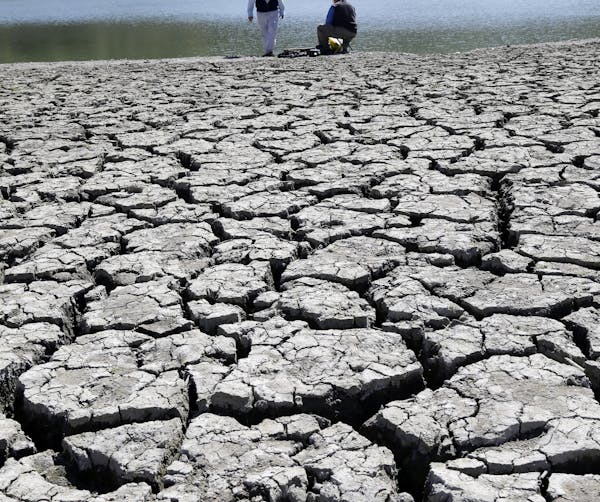DEATH VALLEY, CALIF. – As the driest place in North America, Death Valley is about as inhospitable as you can get on Earth. In fact, NASA frequently uses its barren landscape as an analogue for Mars.
Oddly enough, Death Valley is one of the few places in California that's not technically in "extreme" drought right now. Its drought is listed as only "severe," despite having recorded only 30 percent of its average rainfall so far in 2014. As the rainy season staggers to a close, more than 70 percent of the state is in "extreme" or "exceptional" drought, the highest two categories as described by the U.S. drought monitor.
The yearly average rainfall here is just two and a quarter inches, or about as much as falls in a single healthy spring thunderstorm in the Midwest. On average, in two weeks New York City can receive what falls here in an entire year. Nearby Las Vegas, with more than 2 million people, manages only twice the rainfall of Death Valley.
The reason for Death Valley's exceptional dryness lies in atmospheric physics. A series of mountain ranges separates this isolated spot from the Pacific Ocean, where the bulk of California's rain and snow originate. They cast a rain shadow over the valley: Each mountain range squeezes out a bit more precipitation than the one before. By the time the clouds make it to Death Valley, there's almost nothing left. Air warms as it descends, and dry air warms faster than damp air. Since Death Valley is one of the lowest places on Earth, that adds up to an extreme environment.
Death Valley is technically a dry inland sea, and tiny salt crystals are everywhere. Melting snowpack from the surrounding mountains flows down into the valley, where it eventually evaporates, again turning the ground white with mineral deposits.
The hottest temperature ever measured in Death Valley — 134 degrees — was taken more than 100 years ago. The closest thermometers have come since that day is 129 degrees, including last year. With the steady upward push of climate change, it's only a matter of time before Death Valley breaks its own record. slate
Historic $7.8M jury award in death of Minnesotan struck by driver who was high from huffing aerosol
A wild orangutan used a medicinal plant to treat a wound, scientists say
Remote Lake Superior island wolf numbers are stable but moose population declining, researchers say

